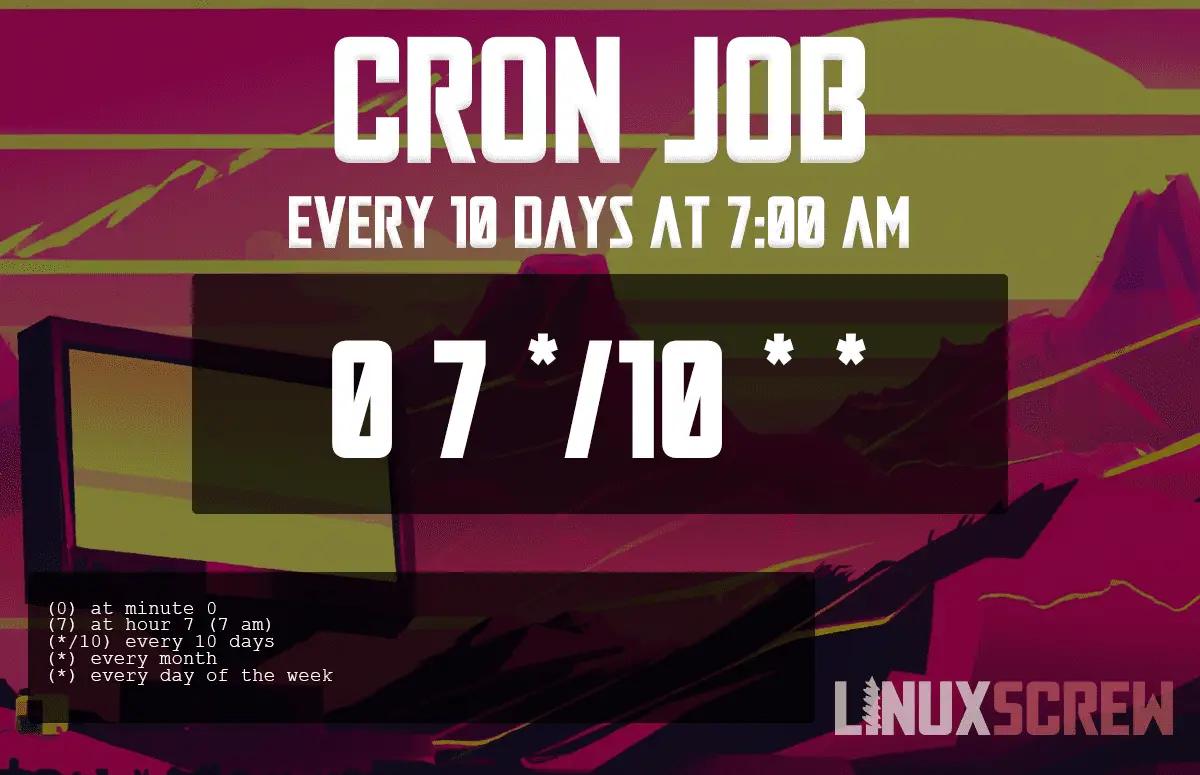This page will help you quickly and easily set up a cron job to run every 10 days at 7:00 am.
The Cron Job/Crontab
To have your task run at this frequency, use the following cron:
0 7 */10 * *
This cron command translates to the following (in Human-Readable format):
“Every 10 days at 7:00 am.”
What is a Cron Job & Crontab?
A cron job is a scheduled task that is typically executed automatically at a predetermined time or interval. Cron jobs are often used to perform routine system maintenance tasks, such as backing up files or databases, deleting temporary files, or sending email notifications.
A crontab is a text file containing a list of commands that are executed at specified times. The commands in the crontab are executed by the cron daemon, which runs in the background and checks for new entries every minute.
Cron Fields
Every cron job uses five fields. Here is an explanation of what each field does in this cron, which runs “every 10 days at 7:00 am“:
FUN FACT: Cron is one of the most versatile tools in a Linux administrator’s toolbox..
Use Cases
You might want to set up a crontab or cron job to run every 10 days at 7:00 am for several reasons, including:
- A daily backup that needs to be stored for 10 days
- Checking for updates to a software package every 10 days
- Deleting temporary files that are older than 10 days
Similar Cron Jobs
You might also want to run a crontab:
- every 4 days
- every 7 days
- every 5 days
- every 3 days
- every 10 days
- every 6 days
- every 3 days at 5:00 pm
- every 2 days at 3:30 pm
FUN FACT: Cron jobs are named after the Greek god Chronos, who represents time itself..
Wrapping Up
In this article, you learned how to set up a cron job that runs every 10 days at 7:00 am. Please share this page with friends and colleagues if you find it useful.
If you have any questions, please don’t hesitate to comment below.
If you are looking for cron jobs that run at certain minutes, hours, days, weekdays, or months, or if you are looking for miscellaneous cron jobs, then check out our relevant sections, or visit our cron job cheat sheet for a list of hundreds of popular cron jobs.

